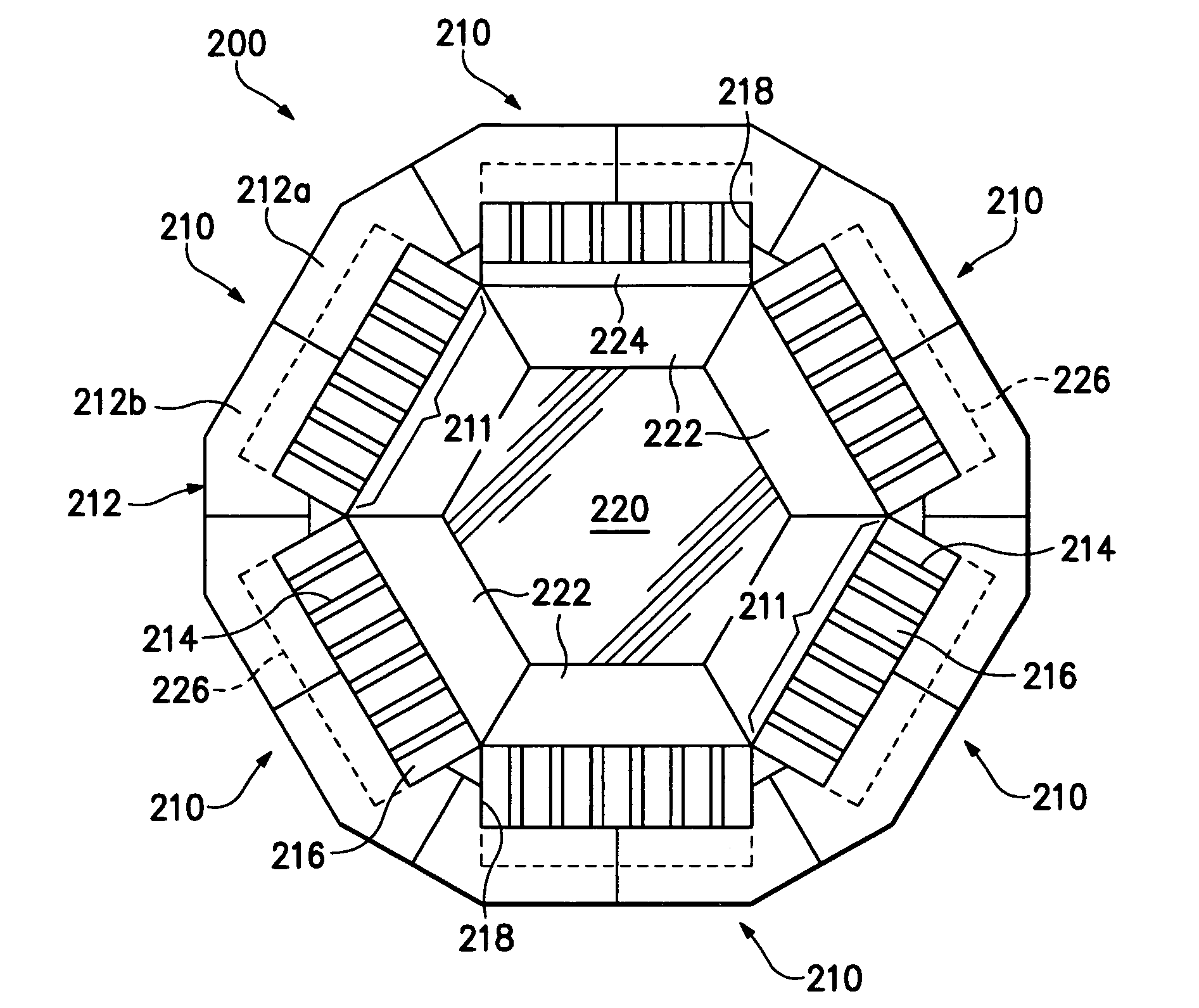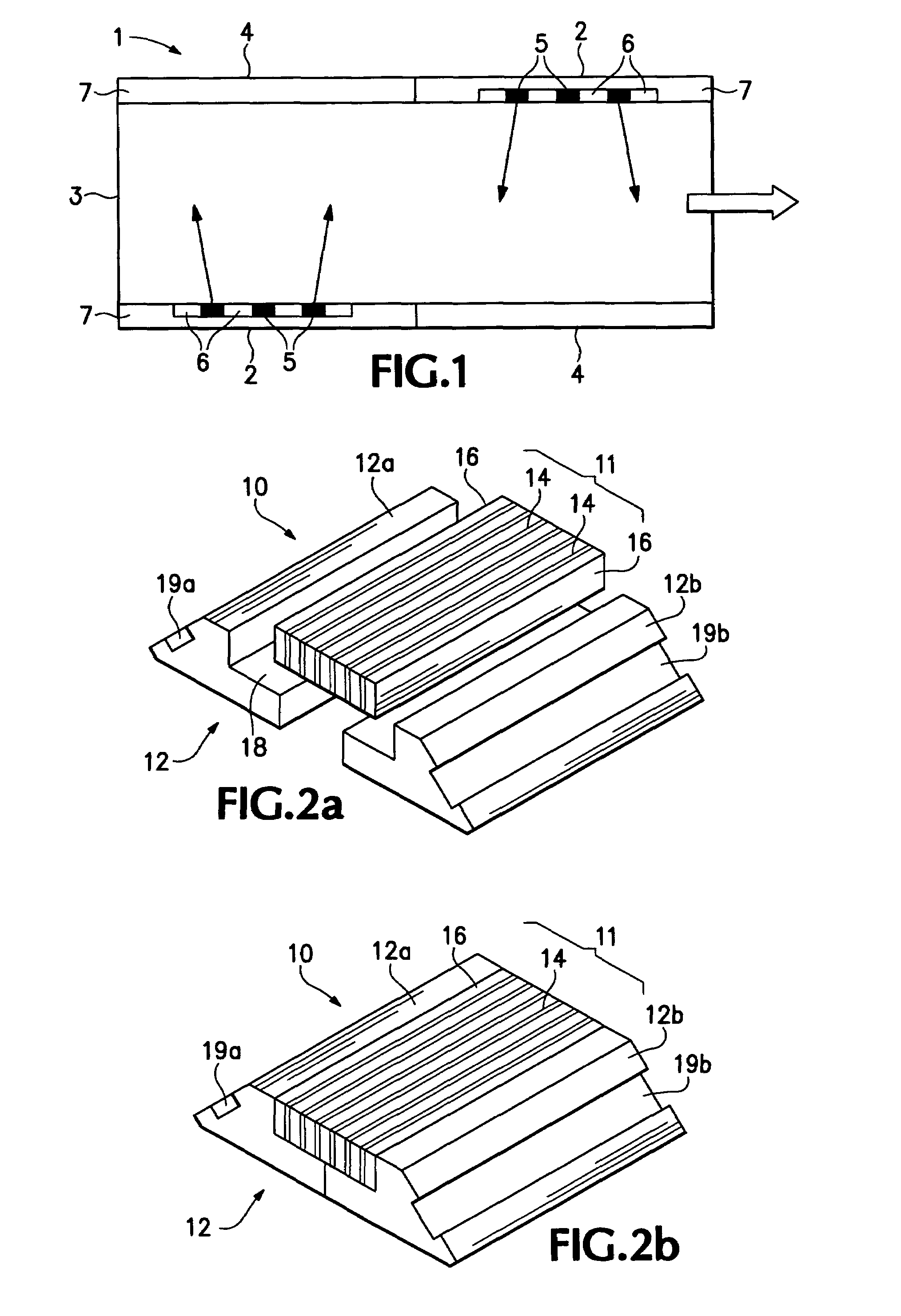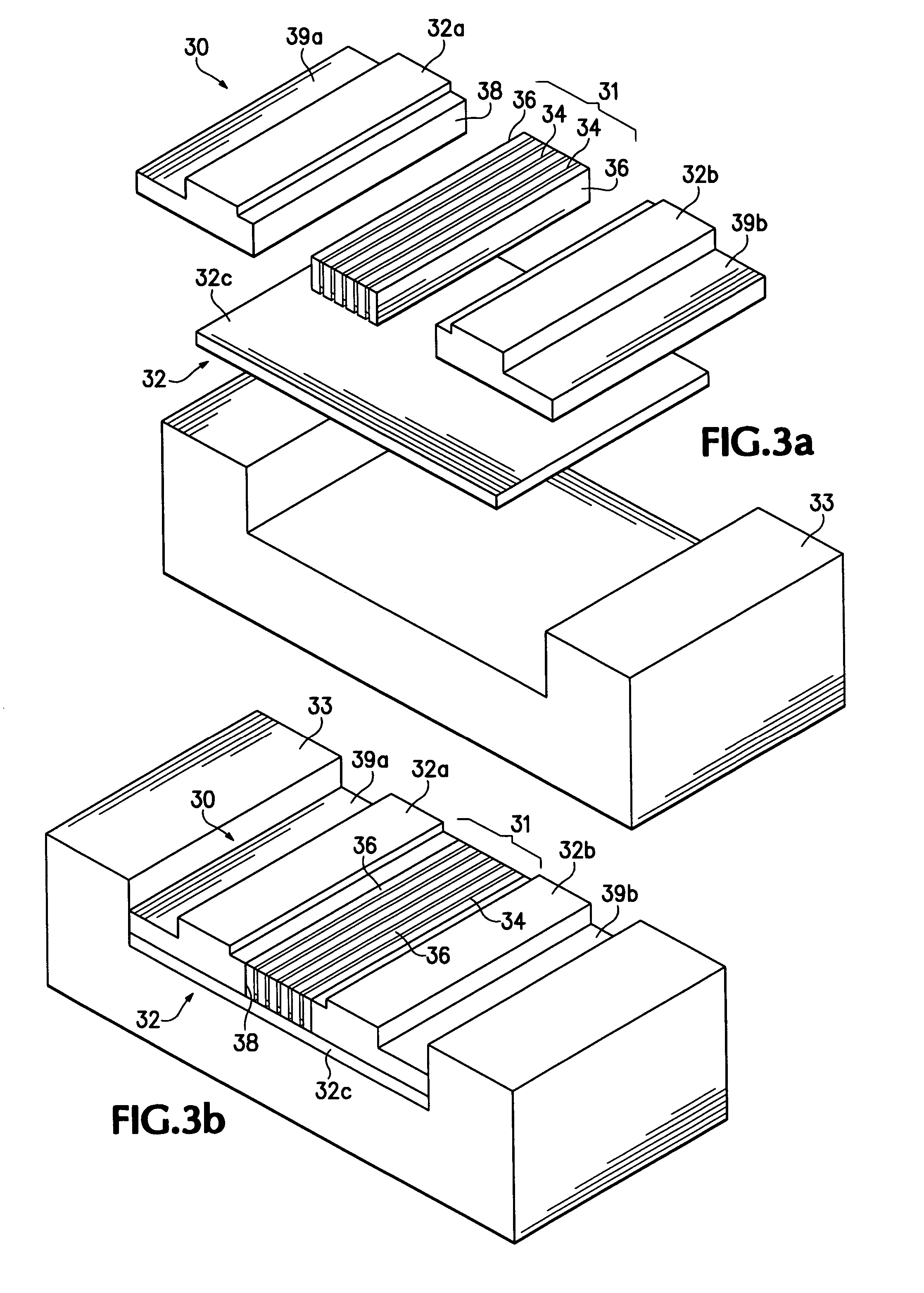Scalable thermally efficient pump diode systems
a diode pump and thermal efficiency technology, applied in the direction of lasers, laser construction details, semiconductor lasers, etc., can solve the problems of significant energy loss, overheating of the diode pump, and significant energy loss, so as to improve the heat removal and/or excitation of the medium and enhance the heat removal system
- Summary
- Abstract
- Description
- Claims
- Application Information
AI Technical Summary
Benefits of technology
Problems solved by technology
Method used
Image
Examples
example 1
Pump Diode Assembly with Two-Component Substrate
[0037]This example describes an exemplary pump diode assembly 10 having a “two-component substrate,” according to aspects of the present disclosure.
[0038]FIGS. 2a and 2b show diode assembly 10 in partially exploded and fully assembled states, respectively. The diode assembly includes a diode array 11 and a two-component substrate 12.
[0039]Diode array 11 includes a plurality of interspersed diode bars 14 and thermally conductive spacers 16. These components are disposed in an at least substantially parallel and alternating pattern, such that each diode bar is adjacent at least one spacer, and such that the diode bars and spacers collectively form a substantially planar right parallelepiped. Moreover, there typically will be one more spacer than diode bar, such that each diode bar is surrounded on both sides by a spacer, and such that the component at each end of the array is a spacer. In other embodiments, there may be one fewer spacers...
example 2
Pump Diode Assembly with Three-Component Substrate, Embodiment 1
[0045]This example describes an exemplary pump diode assembly 30 having a “three-component substrate,” according to aspects of the present disclosure.
[0046]FIGS. 3a and 3b show diode assembly 30 in partially exploded and fully assembled states, respectively. The diode assembly includes a diode array 31, a three-component substrate 32, and an optional additional support member 33 (which may be considered an additional component of the substrate).
[0047]Diode array 31 includes a plurality of interspersed diode bars 34 and thermally conductive spacers 36. The diode array, including the bars and spacers, may be at least substantially as described above, for example, in Example 1.
[0048]Substrate 32 supports diode array 31 and optionally may be used to connect the diode array to a suitable laser. The substrate includes three components or base members 32a, 32b, and 32c, configured to fit together as shown to define an indentat...
example 3
Pump Diode Assembly with Three-Component Substrate, Embodiment 2
[0052]This example describes another exemplary pump diode assembly 30′ having a “three-component substrate,” according to aspects of the present disclosure.
[0053]FIGS. 3c and 3d show diode assembly 30′ in partially exploded and fully assembled states, respectively. The diode assembly includes a diode array 31′, a three-component substrate 32′, and an optional additional support member 33′. Diode assembly 30′ is similar to diode assembly 30, in Example 2. In particular, the diode arrays (e.g., 31, 34, and 36, and 31′, 34′, and 36′) and substrates (e.g., 32a-c, 38, and 39, and 32a′-c′, 38′, and 39′) may be at least substantially identical in the two embodiments. However, the optional additional support members (e.g., 33, and 33′) may differ between the two embodiments. For example, as pictured, member 33 is at least substantially U-shaped (with squared bends), whereas member 33′ is at least substantially planar. Member 33...
PUM
 Login to View More
Login to View More Abstract
Description
Claims
Application Information
 Login to View More
Login to View More - R&D
- Intellectual Property
- Life Sciences
- Materials
- Tech Scout
- Unparalleled Data Quality
- Higher Quality Content
- 60% Fewer Hallucinations
Browse by: Latest US Patents, China's latest patents, Technical Efficacy Thesaurus, Application Domain, Technology Topic, Popular Technical Reports.
© 2025 PatSnap. All rights reserved.Legal|Privacy policy|Modern Slavery Act Transparency Statement|Sitemap|About US| Contact US: help@patsnap.com



